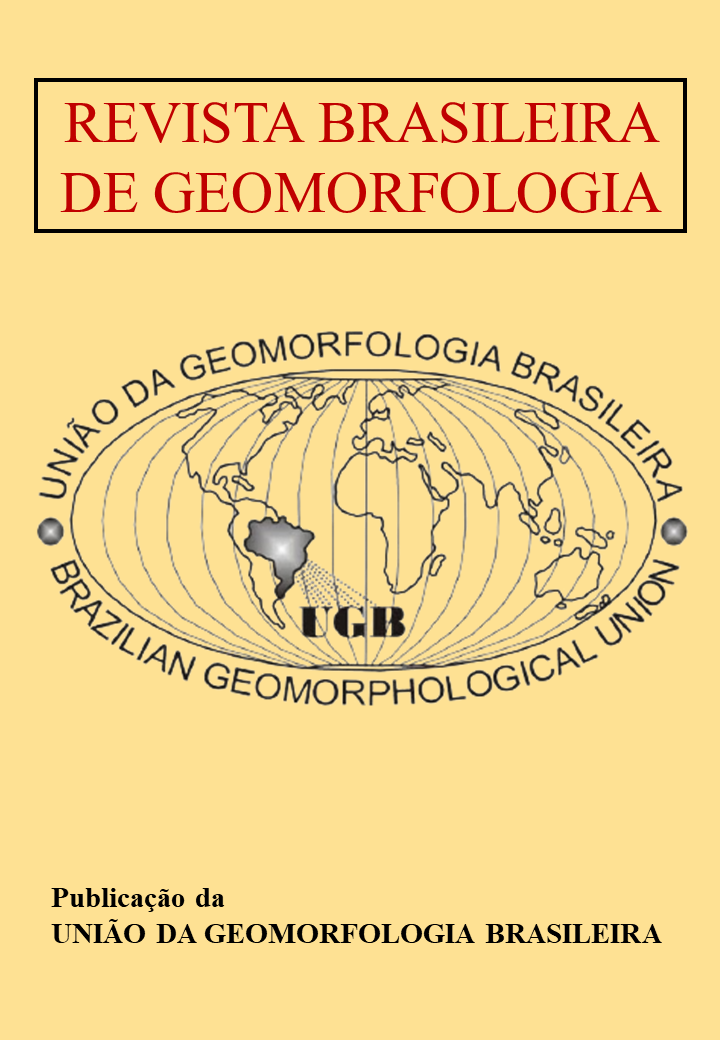Gullies in Brazil: a spatiotemporal approach between 2000 and 2020
DOI:
https://doi.org/10.20502/rbgeomorfologia.v24i00.2417Palavras-chave:
Geomorphology, Erosion, GullyResumo
This article proposes to conduct a bibliographic review of the scientific production on gullies, approaching the conceptual, methodological, and dimensional aspects and their spatial distribution in Brazil. Therefore, the database available on the Brazilian Journal of Geomorphology (RBG, https://rbgeomorfologia.org.br/rbg/index) was used, along with the articles, expanded and simple abstracts from the National Geomorphology Symposium (SINAGEO, http://lsie.unb.br/ugb/sinageos). The analyzed period for the RBG was from 2003 to 2020, and that for the SINAGEO was from 2000 to 2018. Overall, the southeastern region concentrates most of the works, focusing on the hydrological processes that contribute to gullying. Regarding the definitions, there is considerable diversity, with studies that value only the dimensional criteria, the combination of shape and dimensions, or the connectivity with the drainage network. A change in monitoring techniques is currently evident with the use, often combined, of unmanned aerial vehicles (UAVs), terrestrial laser scanning (TLS), and satellite/aerial photography, making it possible to know the spatiotemporal evolution and the current evolutionary stage of gullies. Lastly, the works point out that the occurrence of gullies in rural and urban areas arises from the imbalance between the energy and matter available in the system.
Downloads
Downloads
Publicado
Como Citar
Edição
Seção
Licença

Este trabalho está licenciado sob uma licença Creative Commons Attribution-NonCommercial 4.0 International License.
Autor(es) conservam os direitos de autor e concedem à revista o direito de primeira publicação, com o trabalho simultaneamente licenciado sob a Licença Creative Commons Attribution que permite a partilha do trabalho com reconhecimento da autoria e publicação inicial nesta revista.










